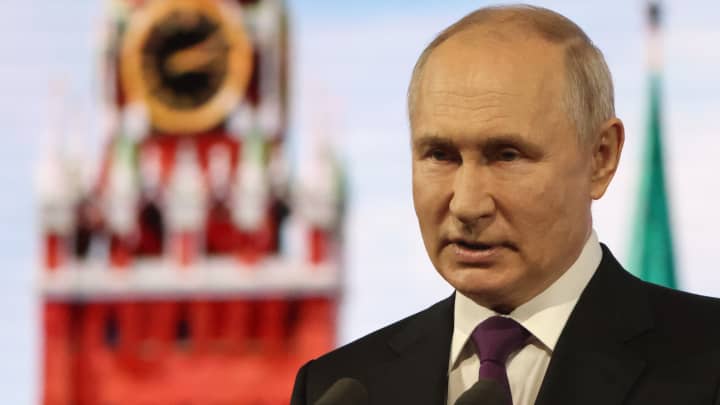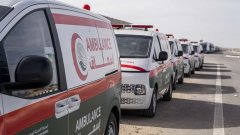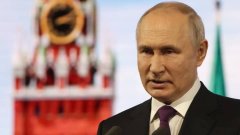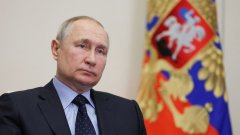
DUBAI, United Arab Emirates — Russian President arrived in Riyadh on Wednesday evening local time, Russian state media said, following a brief trip to Abu Dhabi as he made "working visits" to the United Arab Emirates and Saudi Arabia.
The trips were his first to the Middle Eastern region since began in February 2022.
Both countries are key trading partners for Russia, and have remained neutral in the Ukraine conflict, refusing to adopt Western-led sanctions against the country over its invasion of Ukraine. Putin has made very few journeys outside Russia's borders in recent months, and these visits spotlight the importance of the oil-rich Mideast Gulf Arab states to the Kremlin's international relations.
In Abu Dhabi, Putin met with UAE President Mohammed bin Zayed al-Nahyan "to review the current state of multifaceted bilateral cooperation and the prospects for further expansion of ties, as well as current international issues, with a focus on the situation in the Middle East," according to a Kremlin readout.
A post from the UAE leader's official X, formerly Twitter, account said: "Today in Abu Dhabi I discussed with President Vladimir Putin the ties between our two nations, and the importance of strengthening dialogue and cooperation to ensure stability and progress. The UAE will continue to support efforts aimed at enabling global growth, prosperity and development for all."
Putin, according to Russian state news agency RIA Novosti, told his Emirati counterpart: "Today, thanks to your position, our relations have reached an unprecedented high level. And we are in constant contact, and our colleagues are constantly working with each other. And indeed, the United Arab Emirates is Russia's main trading partner in the Arab world."
The Russian leader then flew to Riyadh to meet with Saudi Crown Prince Mohammed bin Salman and "discuss bilateral cooperation in trade, economic and investment areas" as well as "exchange views on the regional and international agenda," the Kremlin readout said.
It also said that the two leaders would discuss oil, Israel's war in Gaza, and the situations in Yemen and Syria. It was not immediately clear whether the two would discuss Russia's war in Ukraine.
The meeting with the de facto Saudi leader came after oil prices fell despite a joint decision by OPEC+ members to make greater output cuts.
The visits will be followed by Putin hosting Iranian President Ebrahim Raisi in Moscow on Thursday. The Kremlin's alliance with Iran has grown dramatically in importance, as Tehran has become a key trade partner and supplier of the weapons that Russia deploys in Ukraine.
Energy was likely to be central to discussions between Putin and the Middle Eastern leaders, particularly after last week's OPEC+ meeting during which Russia, Saudi Arabia and other members of the oil producers' alliance agreed to voluntary output cuts for the first quarter of 2024.
Abu Dhabi and Moscow have grown closer since Putin's invasion of Ukraine, at least in terms of commerce: overall trade between Russia and the UAE increased by nearly 68% on the year to $9 billion in 2022, according to Russian state news agency Tass. Russian exports to the UAE comprised $8.5 billion of that total.
In February 2023, Russian Ambassador to Saudi Arabia Sergey Kozlov pledged to bring Russian-Saudi bilateral trade to $5 billion annually, Middle East Briefing reports. That figure was $1.75 billion in 2022, but trade in sectors like agriculture, fertilizer and energy commodities has increased significantly, according to Russian economic analysts.
Putin's trips overseas have been severely limited due to the International Criminal Court's arrest warrant for him over alleged war crimes. Notably, Saudi Arabia and the UAE have not ratified the statute that governs the ICC, meaning they are not obligated to arrest the Russian leader on their territory. The visits are the first by Putin to those countries since 2019.
Correction: Russian exports to the UAE comprised $8.5 billion of overall trade between Russia and the UAE in 2022. An earlier version misstated the figure.




